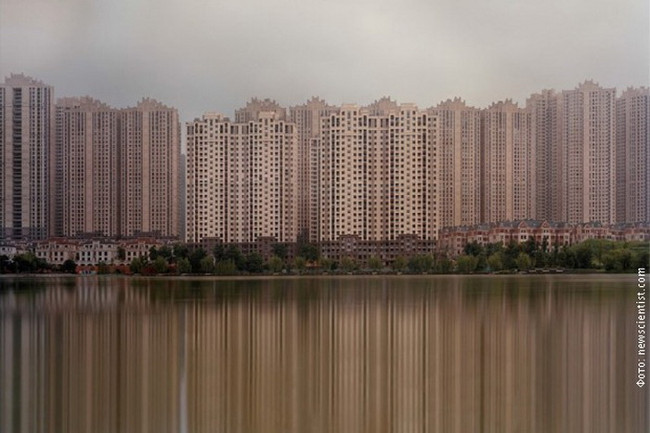Technology reveals ghost cities in China
Along with the process of urbanization, countless ghost cities have sprung up in China over the past 50 years.
Technology helps detect ghost cities in China
The famous ghost cities in China have become the topic of fever in the past half decade. The word "ghost city" is used to denote unused wasteland with empty streets and uninhabited buildings. However, determining the true location of these ghost cities can be quite complicated.
According to New Scientist, last month, researchers in the project funded by China's Baidu search site began searching for a ghost city. Their approach is relatively simple. Through tracking location data of hundreds of millions of Baidu users , they can determine where the largest internet traffic is used. This approach also reveals locations with little or no network activity, most likely ghost cities.

Ghost city includes many uninhabited buildings.(Photo: Kai Caemmerer).
The team filtered the results with seasonal fluctuations . They eliminated tourist towns with the number of residents skyrocketing in half a year and became quiet for the remaining half year. After filtering data, there are more than 50 huge empty areas in China, which have been the areas with strong growth in recent times.
Previous studies on population were done by counting the number of houses with lights on at night. Using internet data from hundreds of millions of people helps to produce more accurate results. But none of these approaches can answer the question of why the ghost city exists.
Kai Caemmerer, an architectural photographer at Columbia University, Chicago, USA, recorded the development of construction areas with low numbers of people throughout China over the past year. Caemmerer visited the city of Kangbashi in Inner Mongolia, the Meixi Lake area in Changsha, Hunan and Yujiapu District in Tianjin, all known as ghost cities. What Caemmerer found were properties waiting for people to come. They were built to a near complete level before someone moved into life.
According to Caemmerer, finding ghost cities is a way of looking forward. These places are not built for the present. " I am interested in what the architecture of cities reveals about the future , " Caemmerer said.
- Ghost cities of the 22nd century
- Ghost wedding haunts in China
- 'Mysterious ghost city' reappears in the middle of the lake
- Build 'ghost city' for scientists
- Ghost images of the world famous
- 'Ghosts' gas reveals traces of alien creatures?
- The truth about 'ghost arms'
- Ghost hunter
- Haze surrounds Chinese cities
- The ghost ship itself caught fire
- Ghost hunting technology
- 'Ghost arm' appears on the chest
 Is the magnetic North Pole shift dangerous to humanity?
Is the magnetic North Pole shift dangerous to humanity? Washington legalizes the recycling of human bodies into fertilizer
Washington legalizes the recycling of human bodies into fertilizer Lightning stone - the mysterious guest
Lightning stone - the mysterious guest Stunned by the mysterious sunset, strange appearance
Stunned by the mysterious sunset, strange appearance